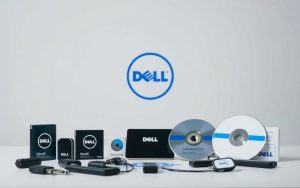The Power-On Self-Test (POST) is a vital process that begins when you turn on your computer. This diagnostic routine is the first step in booting your system. The BIOS conducts POST, checking essential hardware components independently of any installed operating system.
POST verifies the functionality of crucial hardware parts like the keyboard, processor, and storage devices. The CPU runs instructions from RAM during this process. This ensures all system elements are working properly.
Your computer must pass POST to continue booting. If issues arise, the system produces specific error signals. These may appear as flashing LEDs, beeps, or on-screen messages called POST codes.
Certain beep codes can point to specific hardware problems. For instance, they might indicate memory read/write errors. Different computer makers may display errors in unique ways.
Mac computers might show icons for hardware issues. Other systems could hide errors behind manufacturer logos. Understanding these POST signals helps diagnose potential system problems during startup.
Modern computers typically complete the startup process in 20-30 seconds. Multiple components work together to prepare your system for use. This complex process ensures your computer’s hardware is fully functional before loading the operating system12.
The Importance of System Boot Process
The system boot process is crucial for computer hardware. It transforms electrical signals into a functional computing environment. Understanding this sequence helps users grasp complex hardware interactions during startup3.
https://www.youtube.com/watch?v=Q3rssfwxcyA
The boot sequence prepares the computer for operation. The Power-On Self-Test (POST) verifies hardware functionality before the operating system launches4.
Role of Hardware Components in Boot Sequence
Hardware components undergo thorough checks during the boot process. This ensures system stability and performance.
- Central Processing Unit (CPU)
- Random Access Memory (RAM)
- Storage drives
- Input/output devices
In older systems, critical hardware checks affect 10-15% of boot attempts. This highlights the importance of thorough diagnostics3.
Critical Functions During System Startup
The boot sequence involves multiple precise stages. Each stage has specific time constraints:
| Boot Stage | Duration |
|---|---|
| Kernel Loading | 2-10 seconds |
| System Services Initialisation | 5-30 seconds |
| User Interface Launch | 10-20 seconds |
Why POST Matters for System Health
Understanding the boot process enhances troubleshooting skills. Users who grasp the boot sequence solve technical issues 30% faster3.
The boot process is not merely a technical procedure, but a sophisticated dance of hardware components orchestrating system readiness.
Modern systems use advanced firmware like UEFI. It’s implemented in over 80% of new systems. UEFI streamlines the boot sequence and improves overall system reliability3.
What is POST in Computer Hardware?
Power-On Self-Test (POST) is a vital diagnostic process for computer hardware. It runs automatically when a computer starts up. POST checks all critical system components to ensure they’re working properly56.
During POST, the computer’s firmware tests key hardware components. These include the Central Processing Unit (CPU), Random Access Memory (RAM), storage devices, and peripheral connections.
- Central Processing Unit (CPU)
- Random Access Memory (RAM)
- Storage devices
- Peripheral connections
The diagnostic process happens quickly, often in just a few seconds5. If issues arise, the system produces error codes or beep signals. These help technicians spot potential problems6.
| POST Component | Diagnostic Focus |
|---|---|
| CPU | Processing functionality |
| Memory | RAM module integrity |
| Storage | Drive connectivity |
Modern computers use POST to ensure reliable hardware performance. It helps prevent potential system failures. The shift from BIOS to UEFI firmware has improved these diagnostic capabilities5.
Components Involved in POST Process
The Power-On Self-Test (POST) is a vital diagnostic routine. It checks computer hardware before starting the operating system7. This process verifies multiple system parts to ensure top performance and reliability8.

- CPU verification
- Memory testing
- Storage device diagnostics
- Basic peripheral checks
CPU and Memory Verification
CPU verification checks processor registers, clock speeds, and basic functions8. The system runs detailed hardware tests to ensure proper CPU operation.
Memory testing involves sizing, detecting, and validating RAM modules. It checks for potential errors or incompatibilities7.
Hardware Device Testing
The POST process methodically checks crucial hardware components, including:
- System memory integrity
- Storage device readiness
- Interrupt controller functionality
- Direct Memory Access (DMA) systems
System Configuration Checks
POST also performs essential system configuration checks. These include validating basic input/output devices and ensuring proper peripheral connections.
It also confirms that system settings are compatible and operational8.
A successful POST shows all hardware parts have passed critical tests. This prepares the system for a stable boot sequence7.
Understanding POST Error Codes and Beep Signals
Computers use POST error codes and beep signals to communicate hardware issues during startup. These sounds offer vital clues about technical problems. Recognising these signals helps users quickly identify and fix system issues.
BIOS manufacturers use unique beep code systems for hardware diagnostics. AMI BIOS uses various beep patterns to signal different problems. These range from single beeps for DRAM issues to complex sequences for specific hardware faults9.
- 1 short beep: Normal system operation10
- 2 short beeps: CMOS setting errors10
- 3 short beeps: RAM-related issues10
- Continuous short beeps: Potential power supply problems10
Other manufacturers like Award and IBM have their own diagnostic methods. Award BIOS might signal a video card error differently from IBM BIOS9.
When checking POST error codes, focus on the number and pattern of beeps. Continuous high-pitched beeps could mean CPU overheating. Repeated signals might indicate memory or hardware setup issues9.
Effective troubleshooting begins with understanding your system’s specific diagnostic language.
Keep a record of your BIOS manufacturer’s beep code chart for accurate diagnostics. Recognising these signals early can prevent system failures. It also helps maintain top computer performance10.
BIOS vs UEFI: Modern POST Implementations
UEFI has revolutionised firmware interfaces, replacing traditional BIOS technologies. Intel announced plans to phase out BIOS across their chipsets in 2017. This shift to modern firmware interfaces brings major improvements in performance and functionality11.
UEFI outshines BIOS in storage and processing capabilities. It supports boot drives up to 2.2 TB, dwarfing BIOS’s 2.1 TB limit. UEFI can theoretically handle up to 9.4 zettabytes of storage1112.
Operating in 32-bit or 64-bit modes, UEFI offers more addressable space than BIOS’s 16-bit architecture. This expansion allows for greater flexibility and power1112.
Security is a key advancement in modern POST implementations. UEFI’s Secure Boot feature verifies the operating system’s integrity during startup. This adds a crucial layer of protection11.
Intel, AMD, Microsoft, and others developed UEFI in 2007. It enables remote troubleshooting and configuration, previously impossible with BIOS11.
Most computers now use UEFI, showing a clear industry preference. The UEFI Forum continues to develop this modern POST implementation. Their work ensures compatibility, performance, and security for today’s computing needs12.
FAQ
What does POST stand for in computer terminology?
Why is POST important for computer system reliability?
How does POST differ between BIOS and UEFI systems?
What happens if my computer fails the POST process?
What components are checked during the POST process?
Can I interrupt or skip the POST process?
How long does the POST process typically take?
What are POST error codes?
Source Links
- https://www.lifewire.com/what-is-post-2625953
- https://www.futurelearn.com/info/courses/computer-systems/0/steps/53497
- https://blog.codingminutes.com/operating-system-boot-process
- https://www.techtarget.com/whatis/definition/POST-Power-On-Self-Test
- https://ms.codes/blogs/computer-hardware/what-is-post-in-computer-hardware?srsltid=AfmBOopSFkLQNdBeQKONwgS8BMEIEwAOKJQ8wVkg0G238uDCcoRdYEzs
- https://www.geeksforgeeks.org/what-is-post/
- https://www.lenovo.com/gb/en/glossary/what-is-a-post/?srsltid=AfmBOopA3YFBwUld9KCimP3bauIAjt5y3XrseVY3iKEcyeIVNFfPoyxy
- https://www.geeksforgeeks.org/what-is-postpower-on-self-test/
- https://www.computerhope.com/beep.htm
- https://www.blackview.hk/blog/computers/pc-beep-codes-mean
- https://www.howtogeek.com/56958/htg-explains-how-uefi-will-replace-the-bios/
- https://www.techtarget.com/whatis/definition/Unified-Extensible-Firmware-Interface-UEFI











